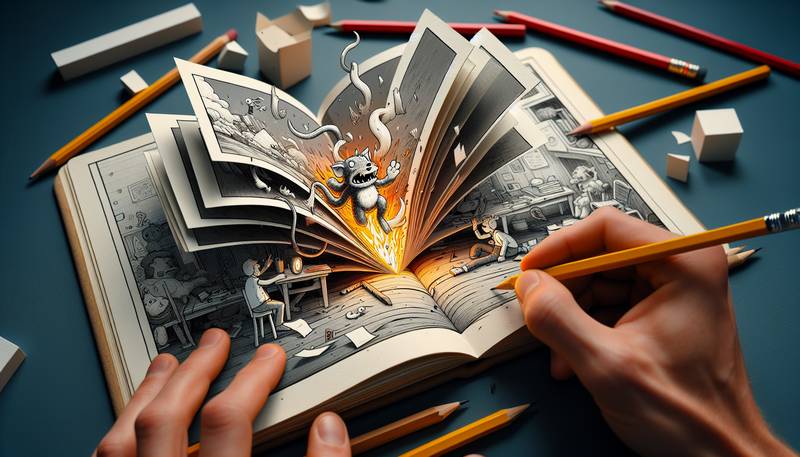Evolving Art Skills with a DIY Animation Flipbook

Turning Pages and HeadsAnimation often feels like a magical realm where characters defy the laws of gravity, time, and sometimes even basic logic. Yet, creating this magic can start with something as simple as a stack of paper and a pencil. Enter the flipbook—a wondrous tool that transforms still images into animated glory, one flip at a time. Think of it as the ancient ancestor of modern-day memes, except instead of a cat in a cowboy hat, you can animate your own imaginative escapades.Imagine the thrill of flipping through your very own masterpiece, where the character you created goes from a static pose to a sudden burst of dance moves that could rival those of an over-caffeinated squirrel. This delightful form of animation doesn’t just entertain; it sharpens your artistic skills, ignites creativity, and most importantly, gives you a fantastic excuse to avoid doing dishes.Getting Started: Supplies and PreparationBefore diving into the world of flipbooks, it’s essential to gather your supplies. The last thing you want is to be in the middle of sketching a heroic chicken saving the world only to realize you have no paper left. Here’s what you’ll need:- Paper: The finer the quality, the less likely your animated hero will resemble a potato.
- Pencil or Pen: Choose your weapon wisely. Remember, a dull pencil is merely a walking stick for your creativity.
- Ruler: For those who believe straight lines are the backbone of civilization.
- Binder Clip or Stapler: To hold your flipping masterpiece together; because having pages scattered everywhere can lead to surprising animosity.
- Optional: Colored Pencils or Markers: To bring life to your flipbook and to confuse people who mistakenly think you’re a world-renowned artist.
Once you have your supplies, find a workspace that inspires you—or, at the very least, doesn’t have sticky residues from last week’s pizza. Clear a space and prepare for the artistic chaos to come.Sketching Your Characters: A PrimerIt’s time to channel your inner Picasso—minus the bewildering confusion regarding your own art. Begin by sketching your characters and actions on each page of your flipbook. The classic rule of animation is to break down movement into small, manageable frames. Start with simple shapes and gradually layer on details. You want your character’s movements to be fluid, not like a giraffe on roller skates. A little tip: make use of in-betweens. If your character is jumping, draw the take-off, the peak, and the landing, then fill in the gaps. Your flipbook shall transform into an animation workout, teaching movement one jump at a time.Perfecting the Flip: The Art of TimingTiming in animation is crucial. Flip too quickly, and your creation becomes a blur; flip too slowly, and you risk launching a career in performance art. It’s all about finding that sweet spot, like the perfect amount of frosting on a cake—too little, and it's dry; too much, and you’re in a sugar coma.As you progress, experiment with the speed of your flips. Each interaction should bring delight or at least a chuckle. If your chicken hero ends up looking more like a seasoned rug, you can always try again. Remember, perfection is overrated; greatness comes with practice (and possibly a few cups of coffee).Sharing Your Work: The Grand RevealOnce your flipbook is complete, it’s time for the grand reveal. This is the moment when you display your animation prowess for friends and family—or simply for your pets, who will undoubtedly be confused yet supportive.You can organize a mini viewing party where you invite guests to flip through your creation, complete with popcorn for that authentic cinema feel. Bonus points if you manage to get everyone to applaud as you launch into a dramatic recounting of the artistic journey of your chicken hero. Remember, storytelling is key, and every good flipbook should have an engaging narrative.From Flipping to Fabulously AnimatedCreating a flipbook is an enjoyable dive into the world of animation that simultaneously enhances your artistic skills. Each flip is a step—sometimes a wobbly one—toward mastering a medium that has entertained generations. So whether your characters become legends or just awkwardly shuffling figures, embrace the process with a smile. After all, even the simplest creations can bring joy. And who knows? Before long, you might just find yourself on the path to being the next animation guru, or at the very least, the proud owner of a flipping good story.
|
|







